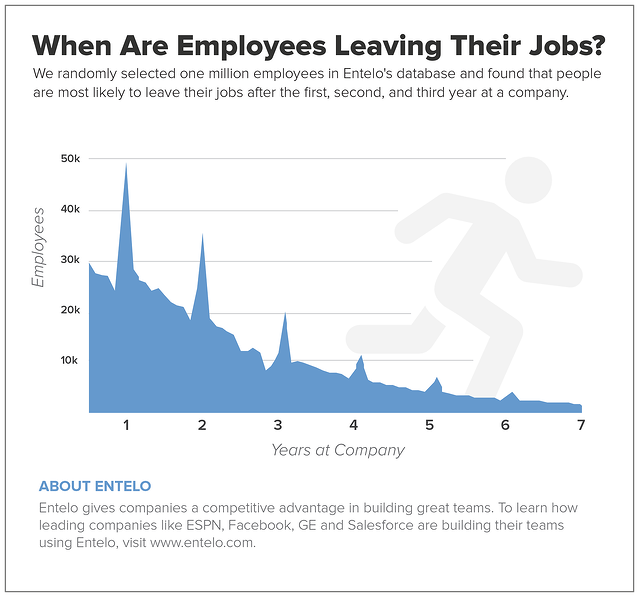 Bad news, Recruiters. Passive candidates don't want to work for you. Over and over again in your career, you're going to find yourself trying to recruit someone who already has a job, isn't necessarily looking to move, and is content where they are. These professionals didn't have an interest in working for you before you popped up in their inbox, and so every last speck of the onus is firmly upon your shoulders. If these individuals were chomping at the bit to work for you, recruiting would be easy, and anyone could do it.
Bad news, Recruiters. Passive candidates don't want to work for you. Over and over again in your career, you're going to find yourself trying to recruit someone who already has a job, isn't necessarily looking to move, and is content where they are. These professionals didn't have an interest in working for you before you popped up in their inbox, and so every last speck of the onus is firmly upon your shoulders. If these individuals were chomping at the bit to work for you, recruiting would be easy, and anyone could do it.
Changing jobs is hard. Recent recruits must simultaneously learn a new office, commute, culture, additional responsibilities, and sometimes a new city. And just for the privilege of accepting all these new stresses, someone's got to find a way to gracefully dip out of their current office multiple times to come and meet you and the team. There's only so many false Doctor's appointments people can schedule before they begin to wonder if all the rigmarole is really worth it, and even if they do decide it's worth it, they get the added anxiety of dropping the I'm leaving bomb on their colleagues.
So, where does that leave you, eager and humble talent acquisition pro? Well, you can't wave a magic wand and make someone who's not looking for a new job suddenly interested in your opportunity. But you can optimize the timing of your outreach to engage with people who are beginning to think the grass is greener. Short of that, you can position your entire process to emphasize how sensitive you are to the person's situation, and not think of yourself as a gatekeeper. Here's how to begin finding and closing passive candidates.
Right Candidates, Right Time.
Who out there is tired of hearing "Thanks for reaching out, but I'm very happy where I am right now."? If you were somehow able to target only the candidates who are open to the possibility of moving, your engagement rates and likelihood of the candidate joining your team will skyrocket. Well, you are. For starters, you can take a look at the time your individual has spent in a current role to predict when they're going to start looking. We pulled 1 million resumes from our database and crunched the numbers to learn exactly when people leave their jobs. Here's what we learned:

At Entelo we've found there are dozens of factors signifying when a candidate is looking for a new gig. As you can see above, the first and second work anniversaries are an extremely common time for people to begin re-evaluating whether they truly want to be at their current company. Reach out to candidates in the months leading up to these milestones to have the best chance of engaging someone who's more likely to be looking for a new job.
Open the Gate, Don't Keep It.
Just as important as timing your outreach is the attitude you take towards the candidate's time. Positioning yourself as someone who needs to be impressed, and as the only party doing any evaluation, is the surest way to turn off talent to your entire organization. When you solicit someone for a role out of the blue, the burden is on you to show them why they should want to work for you. Great interviews exist as a two way street where you evaluate the candidate's skills and they evaluate your role and company. Bear in mind that this individual is taking time away from their office to meet with you, that they already have a job, and that the odds are you need them more than they need you. Even if you are an extremely sexy brand, there are only so many hoops a talented person will jump through to land an offer from you. Always keep the close in mind by tactfully bringing up areas in which your role is a step up for the candidate, and get to know them so you can position your opportunity in the most personally relevant and advantageous way possible.
What are your tricks for recruiting people who are perfectly happy where they are? Leave a comment or tweet at @EnteloRob!

